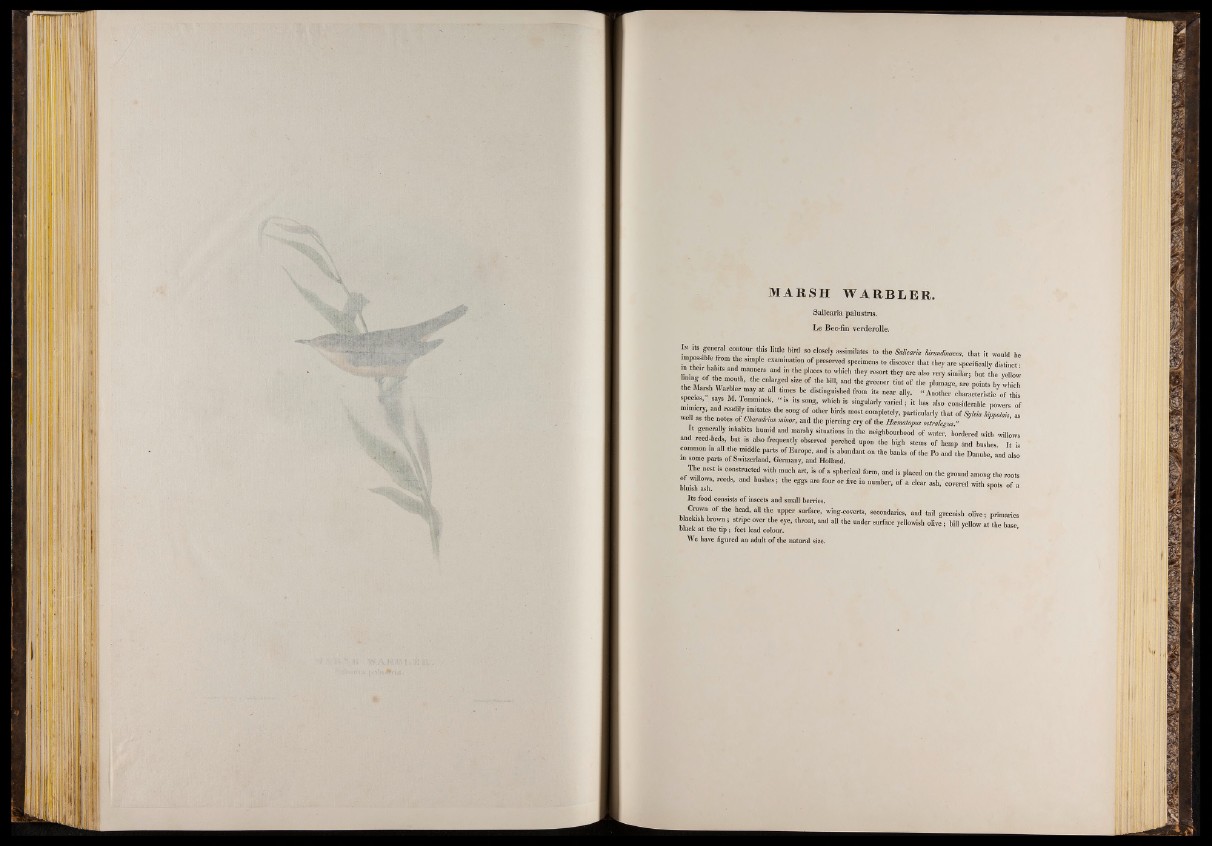
MA R SH WA R B L E R .
Salicaria palustris.
Le Bec-fin verderolle.
1» its general contour this little bird so closely assimilates to the Salicaria KmmXmcea, that it would be
imposstUe from the simple examination of preserved specimens to discover that they are specifically distinct'
them habits and manners and in the places to which they resort they are also very similar; but [he yellow
M B tbe e“1^ ? d s,ze of tbe H a”d H keener tint of the plumage, are points by which
M B M M B be disti”«"ishedfr°m its H ally. -Another characteristic of this
spec.es, says M. Temminck, is its song, which is singularly varied; it has also considerable powers of ■MB BHjH theS0”S of otber bWs -« completely, particularly that M l MB as
well as the notes of Ckaradnm mmtr, and the piercing cry of the Hamalopw ostralegus^ .
t generally inhabits humid and marshy situations in the neighbourhood of water, bordered with willows
an reed-beds, but is also frequently observed perched upoo the high stems of hemp and bushes It is
common m all the middle parts of Europe, and is abundant on the banks of the Po and the Danube, and also
in some parts of Switzerland, Germany, and Holland.
The nest is constructed with much art, is of a spherical form, and is placed on the ground among the roots
H H H reedS’ ^ bushes 1 tbe ^ are four or five in number, of a clear ash, covered with spots of 1
Its food consists of insects and small berries.
I ° r°™ °f tbe head‘ 3,1 tbe uPPer surfaee, wing-coverts, secondaries, and tail greenish olive; primaries
b ackish brown ; stnpe over the eye, throat, and all the under surface yellowish „five; bill yellow at the base
black at the tip; feet lead colour. ’
We have figured an adult of the natural size.